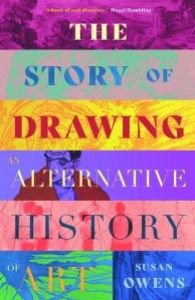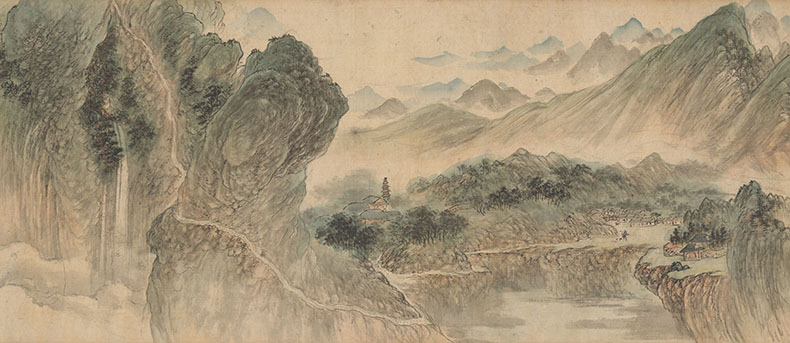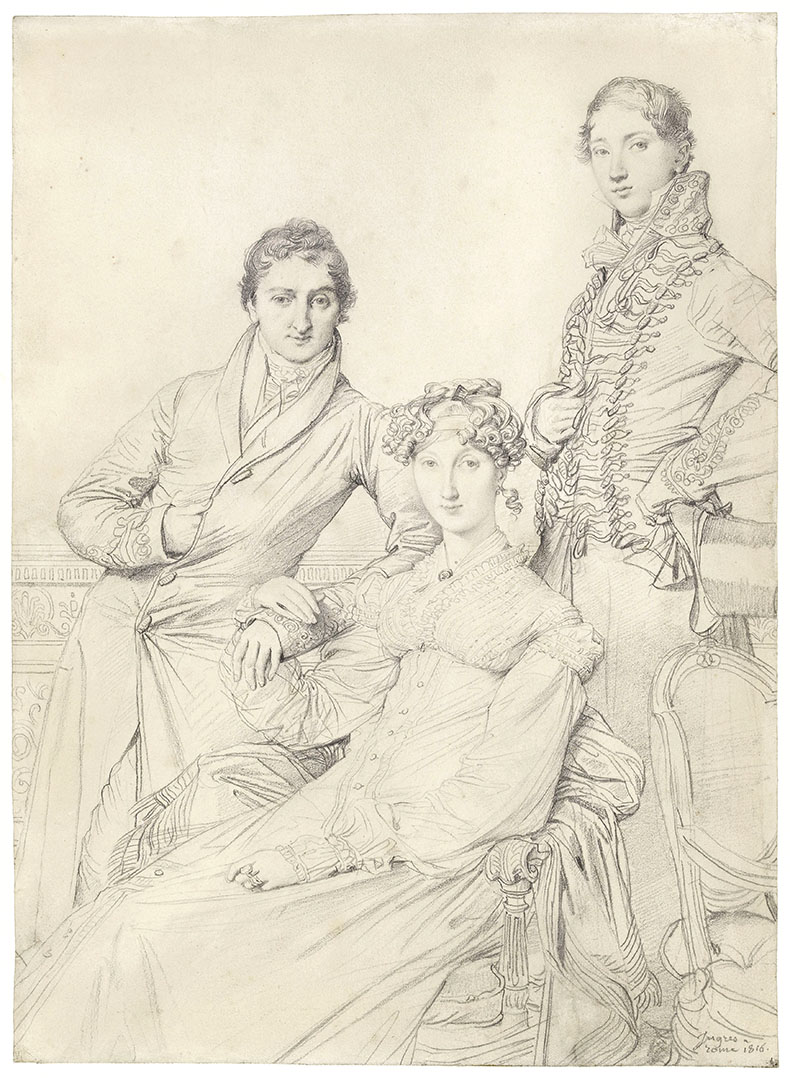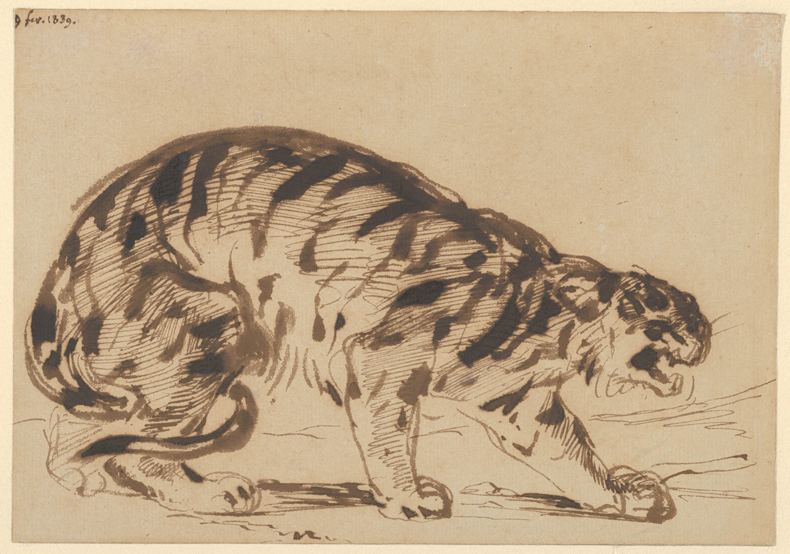From the September 2024 issue of Apollo. Preview and subscribe here.
Towards the end of his life, William Blake met John Constable, perhaps for the first and only time. As he looked through a book of the younger artist’s sketches he stopped, startled, at a drawing of fir trees on Hampstead Heath: ‘Why, this is not drawing, but inspiration!’ he exclaimed. Constable responded with a drollery: ‘I never knew it before; I meant it for drawing.’ Susan Owens’ compelling and enlightening book is an examination of the question at the heart of this little scenario: what is drawing?

Her chronological survey, with its well-chosen nod to Ernst Gombrich, spans 13,000 years of graphic art, from an incised image of horses and a reindeer found in a cave near Montastruc in southern France to a host of contemporary descendants of that Ice Age artist, such as Tacita Dean, Imran Qureshi and Toyin Ojih Odutola. Drawing, says Owens, has always been ‘the engine room of creation’ and if painting and sculpture are the ‘public performance, then drawing is where you can encounter the artist at his or her most unguarded’. At the turn of the 14th century, Cennino Cennini put it simply: ‘You begin with drawing.’
Owens’s own starting points include land art on an enormous scale, such as the Nazca geoglyphs and the White Horse of Uffington, produced before the idea of drawing shrunk to something smaller and more private. For Saint Dunstan drawing was a way of showing himself truly unguarded, in miniature and prostrate in humility at the feet of Christ on a sheet of parchment in a grammatical textbook from c. 950. For others at work in the scriptorium the quill gave them the freedom to illustrate texts with visual jeux d’esprit in order to breathe life into their devotions. One such illuminator, Owens reveals, was a woman, as shown by a deposit of lapis lazuli pigment found in the teeth of a nun who died in Germany sometime between 1000 and 1200.
Owens, a former curator of paintings at the Victoria and Albert Museum, takes the story of drawing forward through the work of some 100 artists, and shows how in the 15th and 16th centuries its uses and meanings expanded with extraordinary speed. Books of drawings compiled by Jacopo Bellini were utilitarian, a stock of motifs for his workshop assistants to copy; for Leonardo they were a means of investigating nature, taking him ‘to places no one had dreamed of’; Sofonisba Anguissola took advantage of the rapidity afforded by chalk and paper to capture fleeting emotions – pinching her young brother hard so she could quickly put down the look on his teary, pained face; for Dürer, from the age of 13, drawing self-portraits was the way he examined his own features and fixed the very fact of his existence.
Meanwhile, in Michelangelo’s hands, drawings played numerous roles: they served as preparatory studies for the figures in his frescoes, fully finished sheets were given as gifts and, in his ethereal Crucifixion images of the 1560s, drawing was a means of expressing the profundity of his religious beliefs. He also knew that drawings were a form of evidence: he burned them in numbers to hide the fact that his art required effort and preserve his reputation as Il Divino – the divine one. Leonardo was even more profligate with paper: the 6,000 sheets from his hand that survive represent just a fifth of what he covered with both writing and drawing. Among later artists who shared this compulsion to think out loud through drawing were Delacroix, who left 8,000 works on paper, and Picasso, who left more than 19,000.

A section of Searching for My Parents (1656), Huang Xiangjian. Metropolitan Museum of Art, New York
If Giorgio Vasari was one of the first to collect drawings as independent works of art, compiling seven precious volumes of what he called il nostro Libro de’ disegni, some artists fetishised the act of drawing. For the Carracci clan, for example, it was the staff of life and they reportedly ‘ate and drew at the same time, bread in one hand and chalk or charcoal in the other’.
Owens’ narrative is not just a conceptual journey but one of materials too: while the earliest artists worked with a sharp point and earth pigments, drawings are now made with everything from fire and wire to blood and rattlesnake venom. She notes, for example, how lustrous, smooth and expensive Japanese torinoko paper, imported by the Dutch East India Company, appealed to Rembrandt, who was used to rougher European paper. When discussing the spectral private images created by Georges Seurat, she shows that without the Conté crayon – prefabricated pencils patented in 1795 that used a mixture of graphite and clay (and later spermaceti, a waxy substance extracted from the heads of sperm whales) – and bumpy Michallet paper, his luminous effects would not have been possible.

Mr and Mrs Joseph Woodhead and Mr Henry Comber in Rome (1816), Jean-Auguste-Dominique Ingres. Fitzwilliam Museum, Cambridge. Photo: © The Fitzwilliam Museum, University of Cambridge
Owens’ geographical range is wide, taking in the subtle landscapes of the 11th-century Chinese painter Guo Xi and the minutely observed works of early 17th-century Persian and Mughal artists alongside their European peers. Although she rarely spends long on any one practitioner, she has a turn of phrase that brings something fresh to each of them, whether that be Canaletto, who ‘allowed his quill to waver inkily, to meander and hesitate’, or Egon Schiele, who in his figure drawings ‘mottled the flesh with stains of rash pink and bruise blue’.
Something of the subtlety of the medium is embodied in the works of two artists with very different mental outlooks, Blake and Ingres. One was the delineator of the interior world, the other of the exterior, nevertheless both thought about the medium in the same way. In 1809, Blake made it his touchstone, declaring that painting was simply drawing on canvas and engraving just drawing on copper. ‘He who Draws best must be the best Artist,’ he said. Ingres was pithier: drawing, he stated, is ‘the probity of art’. As Owens shows so deftly, the story of drawing is composed of innumerable chapters.

Crouching Tiger (1839), Eugène Delacroix. Metropolitan Museum of Art, New York
The Story of Drawing: An Alternative History will be published by Yale University Press in October.
From the September 2024 issue of Apollo. Preview and subscribe here.














![Masterpiece [Re]discovery 2022. Photo: Ben Fisher Photography, courtesy of Masterpiece London](http://zephr.apollo-magazine.com/wp-content/uploads/2022/07/MPL2022_4263.jpg)
‘Like landscape, his objects seem to breathe’: Gordon Baldwin (1932–2025)